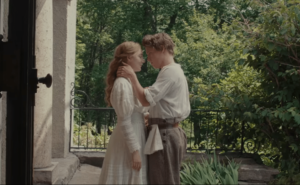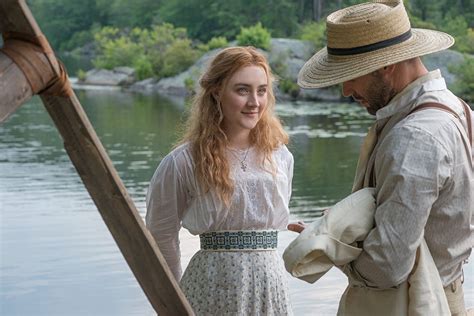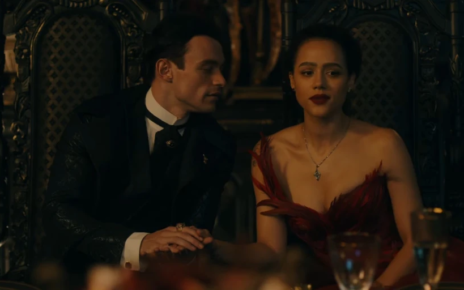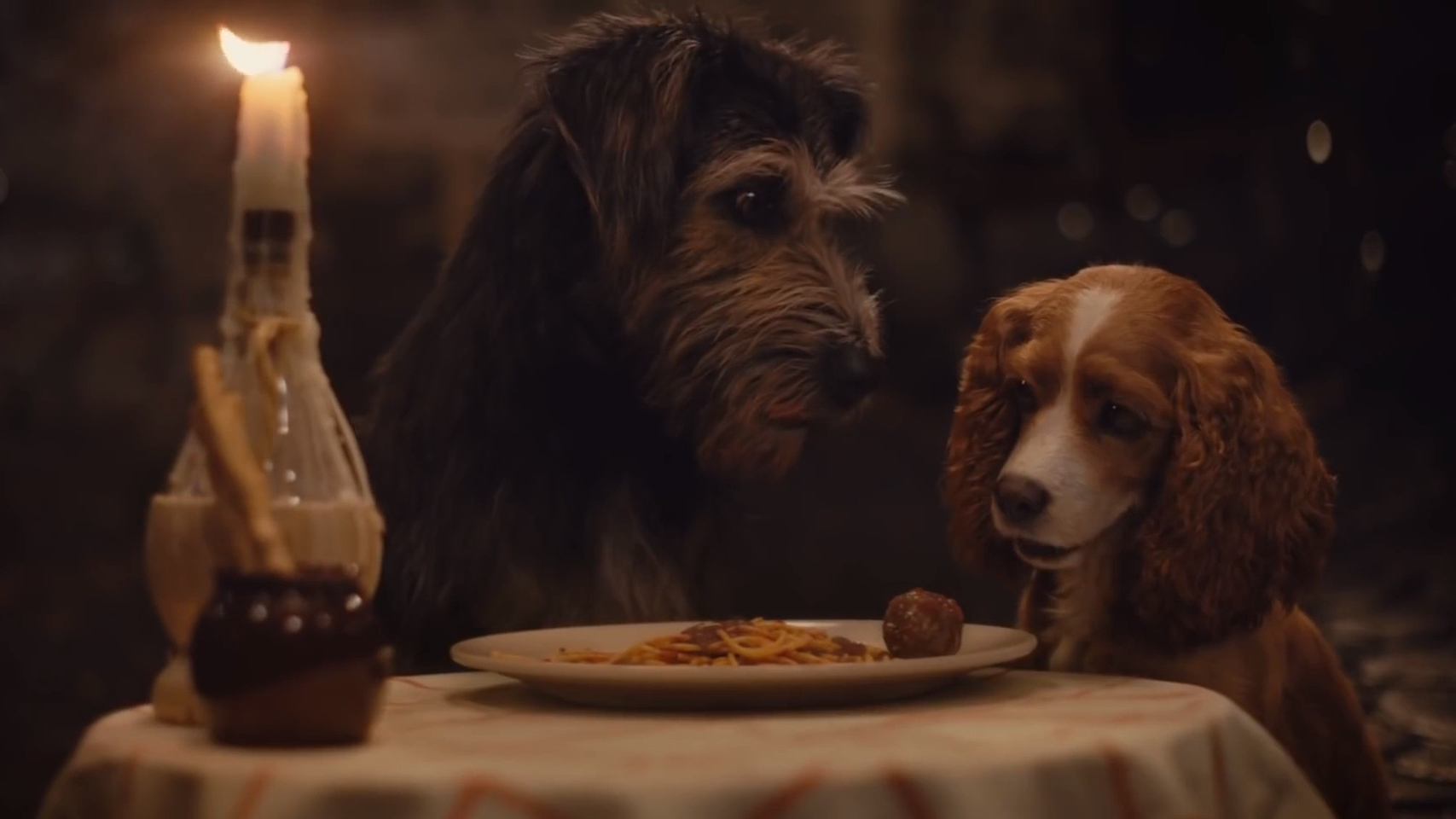Nobody brightens a day quite like Anton Chekhov, amIright? Who’s up for some czarist era depression? C’mon, you know you want some. What better place than a summer home of privilege with unhappy people? And what better time than Russia of 1904 when the place is just about to fall apart? (Politics not included in story, please check with your local historian whether your heart is strong enough for Russian drama.)
I don’t know how Chekhov intended his play to go, put I’m going to guess it wasn’t supposed to be a Möbius strip; I just love getting to the end of a tiresome two-hour film only to discover it’s starting over again. Dude! Psst! You’re supposed to flash-forward to a critical juncture, not the end of the film. The idea is to whet appetites to hide the fact that your chronological opening isn’t strong. This does neither. In the first five minutes, you’ve essentially told me your beginning ain’t good, your ending ain’t good, and there’s nothing in the middle you want to show me quickly, either. This must be one heckuva play.
Aspiring writer and overacting hunk Konstantin (Billy Howle) has decided to put on a play for his klan, which includes his starlet actress mother, Irina (Annette Bening), the successful writer she dragged home, Trigorin (Corey Stoll), and the girl he’s smitten with, Nina (Saoirse Ronan). Mom is about as supportive as a one-legged stool, so when she makes with the “Mystery Science Theater” routine during Konstantin’s family & friends show, the hothead pulls a Cartman and storms off to overact elsewhere. Little did I know this moment of self-generated outrage was to be the highlight of a very dull film.
There’s a big problem when somebody writes a comedy as a drama. The Seagull sets us up with a pretty good unrequited love chain: Mikhail (Michael Zegen) loves Masha (Elisabeth Moss) who loves Konstantin who loves Nina who loves Trigorin who showed up with Irina who loves herself. Well, at least that last one can be returned in part. This chain is as comic a premise as one will find in period drama. Isn’t that the plot of A Midsummer Night’s Dream? And yet, here it’s about a funny as a Russian gulag. Even the dark humor involved comes with an acrid aftertaste. You may as well get to the revolution stuff already, comrades.
Then comes the metaphor of The Seagull itself: in Act II, Konstantin shoots the wayward bird and presents it at Nina’s feet as a cat might please an owner with the offer of a dead mouse. For some reason, Nina ain’t impressed. Go figure. Dating tip for all you youngsters out there – before you kill anything to make it a present for your S.O. or would-be squeeze, you might wish to check on how that person feels about, I dunno, guns, hunting, or dead things in general. There are more rules to dating in the modern world, but this one is kind of important. Hence, we’re left with The Seagull – a once beautiful and soaring creature struck dead in a short-sighted impulse. Who is The Seagull? Is it Nina, the pretty girl in love with the wrong man? Is it Masha, the other pretty girl in love with the wrong man? Is it Konstantin, whose mother would clip his wings just to let herself soar comparatively higher? All I know is there was once a bright, vibrant living thing and by the time I saw it, it was dead. Sounds a lot like the film itself.
things in general. There are more rules to dating in the modern world, but this one is kind of important. Hence, we’re left with The Seagull – a once beautiful and soaring creature struck dead in a short-sighted impulse. Who is The Seagull? Is it Nina, the pretty girl in love with the wrong man? Is it Masha, the other pretty girl in love with the wrong man? Is it Konstantin, whose mother would clip his wings just to let herself soar comparatively higher? All I know is there was once a bright, vibrant living thing and by the time I saw it, it was dead. Sounds a lot like the film itself.
The Seagull is a costume period piece based on the work of a long-established author – in other words, this is exactly the kind of project Hugh Grant guilts Julia Roberts into making during Notting Hill. The problem is that as much as this might represent “high art” or some other imaginary egalitarian construct, an audience is still an audience; the object is to entertain, enlighten, enrapt, embitter, or at least empathize. We’ve been talking about what a talent Saoirse Ronan is for years now, but she was terrible in The Seagull. If this is the project you make to get people to take your acting seriously, you are doing it wrong; you may as well continue being Lady Bird, because your wings can’t seem to stretch for this avian endeavor. Yeah, I’m picking on Ms. Ronan when a director and cast are all at fault here, but she stands out the most as the pivotal player in a failed production. I don’t know if any fault lies with source material; I’m guessing some does. This isn’t Chekhov’s best work by a long shot and he ain’t exactly a bowl of ovations even when he’s on his game. Who is The Seagull? Trick question. There was no seagull; it was an albatross.
Ah yes, when wrestling with the long-written word
Modern interpretation can seem quite absurd
As for The Seagull
A production un-regal
I’m flipping this film the bird
Rated PG-13, 98 Minutes
Director: Michael Mayer (Not Austin Powers, not Halloween, and not making a name for himself)
Writer: Stephen Karam
Genre: ♪More clouds of gray/Than any Russian play could guarantee
Type of being most likely to enjoy this film: Anton Chekhov
Type of being least likely to enjoy this film: Modern audiences



